Hello, that tank is driving me crazy, something is not right about plant health except some sp, could somebody help me to show me the problem ? thx
Weird that the tank is nearly algae free
1. Size of tank.
15 gallons
2. Age of the system approximately.
2+ months
3. Tap water parameters.
GH = 17, KH = 11, NO3 vary from 19ppm to 35 ppm
4. Filtration.
eden 521 800l/hr
5. Lighting and duration.
diy led 5730 180led 60° lenses, 41w max, dimmed to 15w, maybe i need to go back to t5ho ?
6. Substrate.
Pool filter sand, 0.6/1.6 mm
7. Co2 dosing or Non-dosing.
Co2, can't do a ph profile unfortunaly, drop lime green at start
8. Fertilizers used + Ratios.
Estimative index, NO3 : 20 from KNO3, 15+ from tap, PO4 : 3ppm from KH2PO4, tap is really low on po4. K from K2SO4 = 30ppm, calcium = 120 mg/l from tap, magnesium = 10 ppm, micro from easylife profito, Fe = 0.5 ppm
9. Water change regime and composition.
50 % weekly, 50% tap water & 50% rain water
10. Plant list.
Didiplis diandra, pellia, rotala rotundifolia, rotala orange juice, reinecki mini, myriophyllum tuberculatum, java moss, rotala walichii, nesae pedicillata golden, myriophyllum red stem
11. Inhabitants.
Cherry Shrimp
12. Full tank shot & Surface image.

Weird that the tank is nearly algae free
1. Size of tank.
15 gallons
2. Age of the system approximately.
2+ months
3. Tap water parameters.
GH = 17, KH = 11, NO3 vary from 19ppm to 35 ppm
4. Filtration.
eden 521 800l/hr
5. Lighting and duration.
diy led 5730 180led 60° lenses, 41w max, dimmed to 15w, maybe i need to go back to t5ho ?
6. Substrate.
Pool filter sand, 0.6/1.6 mm
7. Co2 dosing or Non-dosing.
Co2, can't do a ph profile unfortunaly, drop lime green at start
8. Fertilizers used + Ratios.
Estimative index, NO3 : 20 from KNO3, 15+ from tap, PO4 : 3ppm from KH2PO4, tap is really low on po4. K from K2SO4 = 30ppm, calcium = 120 mg/l from tap, magnesium = 10 ppm, micro from easylife profito, Fe = 0.5 ppm
9. Water change regime and composition.
50 % weekly, 50% tap water & 50% rain water
10. Plant list.
Didiplis diandra, pellia, rotala rotundifolia, rotala orange juice, reinecki mini, myriophyllum tuberculatum, java moss, rotala walichii, nesae pedicillata golden, myriophyllum red stem
11. Inhabitants.
Cherry Shrimp
12. Full tank shot & Surface image.
Attachments
-
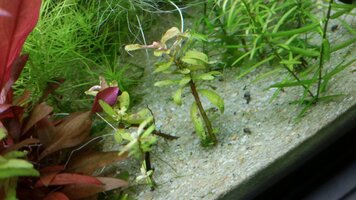 321201632_450358890638904_5010578026431221224_n.jpg132.2 KB · Views: 100
321201632_450358890638904_5010578026431221224_n.jpg132.2 KB · Views: 100 -
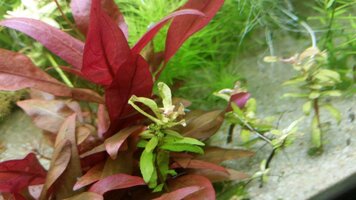 321851750_548573630621189_3469560360360556186_n.jpg101.4 KB · Views: 105
321851750_548573630621189_3469560360360556186_n.jpg101.4 KB · Views: 105 -
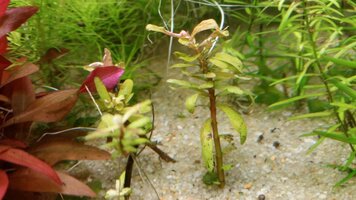 321893821_565411391670870_2951831743324657746_n.jpg118 KB · Views: 96
321893821_565411391670870_2951831743324657746_n.jpg118 KB · Views: 96 -
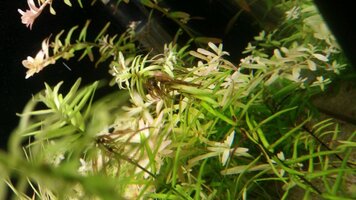 321908517_455466823458933_716359709808970612_n.jpg122 KB · Views: 106
321908517_455466823458933_716359709808970612_n.jpg122 KB · Views: 106 -
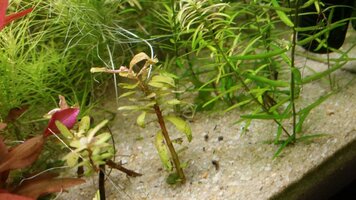 321967731_494162462874922_3678609722052509418_n.jpg144.5 KB · Views: 104
321967731_494162462874922_3678609722052509418_n.jpg144.5 KB · Views: 104 -
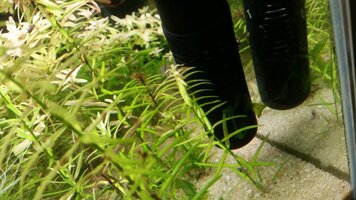 322040825_1202179967394161_6008295676576557365_n.jpg135.3 KB · Views: 93
322040825_1202179967394161_6008295676576557365_n.jpg135.3 KB · Views: 93 -
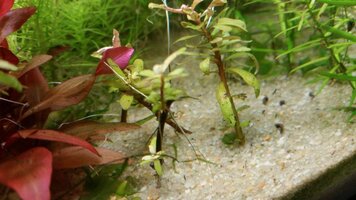 322346860_471802261781282_3790512446608579670_n.jpg117.8 KB · Views: 99
322346860_471802261781282_3790512446608579670_n.jpg117.8 KB · Views: 99


